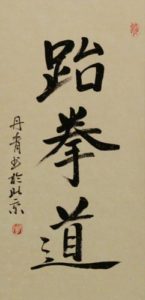
Lots and lots of things have been said about “what is Taekwon-Do” and how to “spell Taekwon-Do”, Taekwondo, taekwondo, Taekwon do, Tae Kwon Do, TaeKwonDo, etc. Of course, going strictly by the way it is written in Taekwon-Do’s country of origin of Korea, well, it is just 태권도. It has no space, no capitals, and no hyphens. Of course, the same is true when we look at the Hanja (Chinese/Japanese) way to write Taekwon-Do 跆拳道.
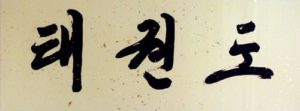
So, why do we have so many ways of writing this rather simple three-syllable word? Well, we could start with the etymology of this word. Taekwon-Do is not a native Korean term! It is a word of Chinese origin! The word also has strong Japanese ties. As most know, Korea was a nation-state (1910-1945) of the Japanese Empire for some time. So it isn’t unreasonable to see that terms of Japanese origin would sneak into the Korean vocabulary. But before we head into the etymology of Taekwon-Do, let’s see what other authors, masters, and grandmasters of Taekwon-Do say….
As to why the I.T.F.® and the Kido Kwan™ use the spelling of “Taekwon-Do” well, simply put, General Choi when asked personally by me (1999), said the spelling in English should be “Taekwon-Do” with emphasis on the “Taekwon” as the physical art and greeting♦, and “Do” is the philosophy of the art.
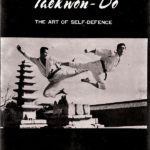 Choi, Hong-hi stated in his book TAEKWON-DO THE ART OF SELF-DEFENSE copyright: 1965 that “Translated from Korean, “Tae” (t’ae) means to jump or kick or smash with the foot. “Kwon” denotes a fist-chiefly to punch or destroy with the hand or fist. “Do” means art, way, or method. Thus taken collectively “Taekwon-Do” indicates the punches, flying kicks, blocks, dodges, and interceptions with the hands, arms, and feet to the rapid destruction of the opponent (Choi 14).
Choi, Hong-hi stated in his book TAEKWON-DO THE ART OF SELF-DEFENSE copyright: 1965 that “Translated from Korean, “Tae” (t’ae) means to jump or kick or smash with the foot. “Kwon” denotes a fist-chiefly to punch or destroy with the hand or fist. “Do” means art, way, or method. Thus taken collectively “Taekwon-Do” indicates the punches, flying kicks, blocks, dodges, and interceptions with the hands, arms, and feet to the rapid destruction of the opponent (Choi 14).
 In the fourth edition of Choi, Hong-hi’s book TAEKWON-DO (The Korean Art of Self-Defence) copyright: 1995 and more commonly referred to as the “condensed encyclopedia” he states: “Translated literally “Tae” stands for jumping of flying, to kick with the foot. “Kwon” denotes the fist-chiefly to punch or destroy with the hand or fist. “Do” means an art or way-the right way built and paved by the saints and sages in the past. Thus taken collectively “Taekwon-Do” indicates the mental training and the techniques of unarmed combat for self-defense as well as health, involving the skilled application of punches, kicks, blocks and dodges with bare hands and feet to the rapid destructions of the moving opponent or opponents” (Choi 15).
In the fourth edition of Choi, Hong-hi’s book TAEKWON-DO (The Korean Art of Self-Defence) copyright: 1995 and more commonly referred to as the “condensed encyclopedia” he states: “Translated literally “Tae” stands for jumping of flying, to kick with the foot. “Kwon” denotes the fist-chiefly to punch or destroy with the hand or fist. “Do” means an art or way-the right way built and paved by the saints and sages in the past. Thus taken collectively “Taekwon-Do” indicates the mental training and the techniques of unarmed combat for self-defense as well as health, involving the skilled application of punches, kicks, blocks and dodges with bare hands and feet to the rapid destructions of the moving opponent or opponents” (Choi 15).
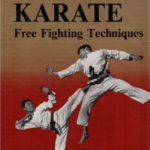 Cho, Shi-hak is also known as Henry Cho in his 1968 book KOREAN KARATE Free Fighting Techniques states that “Tae-kwon is the Korean word for karate recently adopted by the Korean Tae-Kwon do Federation. Tae-kwon do (tae meaning foot; kwon, fist; and do, martial art) is identical to Japanese karate, and the title is a literal description of an art consisting of foot and hand techniques.” (Cho 21)
Cho, Shi-hak is also known as Henry Cho in his 1968 book KOREAN KARATE Free Fighting Techniques states that “Tae-kwon is the Korean word for karate recently adopted by the Korean Tae-Kwon do Federation. Tae-kwon do (tae meaning foot; kwon, fist; and do, martial art) is identical to Japanese karate, and the title is a literal description of an art consisting of foot and hand techniques.” (Cho 21)
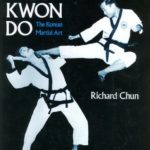 Chun, Rhin-moon also known as Richard Chun in his 1976 book TAE KWON DO The Korean Martial Art stated that “Tae Kwon Do, “The Art of Kicking and Punching,” incorporates the abrupt, linear movements of Karate and the flowing, circular patterns of Kung Fu with its incomparable kicking techniques to form an integrated system unique to Korea. (Chun 7, 8)
Chun, Rhin-moon also known as Richard Chun in his 1976 book TAE KWON DO The Korean Martial Art stated that “Tae Kwon Do, “The Art of Kicking and Punching,” incorporates the abrupt, linear movements of Karate and the flowing, circular patterns of Kung Fu with its incomparable kicking techniques to form an integrated system unique to Korea. (Chun 7, 8)
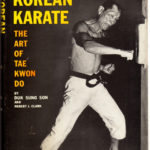 Son, Duk-sun & Robert Clark in their book KOREAN KARATE THE ART OF TAE KWON DO copyright 1968 says “Tae Kwon Do is a Korean martial art.” And “Tae Kwon Do is essentially discipline: the discipline of the mind, the body, and the spirit.” (Son 1, 5)
Son, Duk-sun & Robert Clark in their book KOREAN KARATE THE ART OF TAE KWON DO copyright 1968 says “Tae Kwon Do is a Korean martial art.” And “Tae Kwon Do is essentially discipline: the discipline of the mind, the body, and the spirit.” (Son 1, 5)
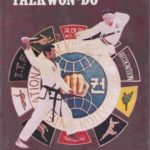 Jimmy M.S. Too in his book THE TECHNIQUES OF TAEKWON-DO A Modern International Martial Art simply states “Taekwon-do is an effective and superior form of martial art. It employs hand and foot techniques for self-defense.” (Too 28)
Jimmy M.S. Too in his book THE TECHNIQUES OF TAEKWON-DO A Modern International Martial Art simply states “Taekwon-do is an effective and superior form of martial art. It employs hand and foot techniques for self-defense.” (Too 28)
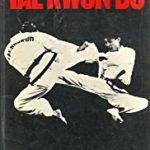 B.S. Huan in his book TAEKWON-DO says “TaeKwon-Do is the Korean martial art that was perfected by the Korean TaeKwon-Do movement in 1955 to supersede ancient Korean fighting arts. And “Tae” means to jump or kick or smash with the feet” “Kwon means to block, punch, and strike with the hand or fist. And “Do” means “An art”. (Huan 17)
B.S. Huan in his book TAEKWON-DO says “TaeKwon-Do is the Korean martial art that was perfected by the Korean TaeKwon-Do movement in 1955 to supersede ancient Korean fighting arts. And “Tae” means to jump or kick or smash with the feet” “Kwon means to block, punch, and strike with the hand or fist. And “Do” means “An art”. (Huan 17)
We also have different ways of defining exactly what Taekwon-Do is as well.
Choi, Hong-hi “Taekwon-Do: The Art of Self Defense” Daeha Publication: Seoul, Korea. 1965
Choi, Hong-hi “Taekwon-Do: The Korean Art of Self Defense” International Taekwon-Do Federation: Printed in New Zealand. 1995
Cho, Shihak Henry “KOREAN KARATE Free Fighting Techniques” Charles E. Tuttle Company: Publishers Copyright 1968
Chun, RhinMoon Richard “TAE KWON DO The Korean Martial Art” Harper & Row Publishers, Copyright 1976
Son, Duk-sun & Robert Clark “KOREAN KARATE THE ART OF TAE KWON DO” Prentice Hall Press, Copyright 1968
Jimmy M.S. Too “The Techniques of Taekwon-Do” Bushido Publishers, Singapore, Copyright November 1975
B.S. Huan “TAEKWON-DO” Russ International Publishers Singapore, Copyright 1975
♦ we use the greeting of “taekwon” when bowing in an organized training session
![]()
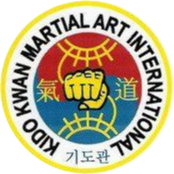
Average Rating